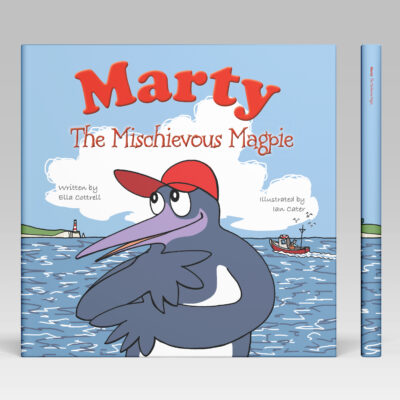Children’s Book Printing UK
Firstly, congratulations on completing your children’s book. We work with many publishers and authors to bring their books to life. With our eye for colour, and the production knowledge within our team, the books we produce are of the highest quality.
We’ve been children’s book printers for many years and during that time we’ve delighted authors across the UK with a high quality service and final printed book. Printing is available in full colour on a range of paper stocks and binding options.
We appreciate you may never have printed a book before so we’re here to work closely with you to help you through the process. Your children’s book printing can be ordered online in either softback or hardback or please contact our team for more details. Create a high quality finished product children can enjoy today!
Print a children’s book with us!

Print2Demand Turaround
We provide a fast turnaround of materials, so that you don’t have to wait any longer to see your children’s book in print.
From receiving your files, we aim to provide a first proof within 3 days. Once this has been approved, our customer services team will advise a delivery date to ensure you receive your books in the quickest possible time.
If you have a specific publishing date in mind, or a book signing arranged, then please tell us when you order and we’ll endeavour to meet this deadline.
Professional Children's Book Printing
Whether you need 10 children’s books printed or 2,000 we give you the freedom to order a short or long print run through our website. Whether you’re thinking of publishing a children’s book or are ready to print and need more advice on file preparation, we can help!
Get in touch with our team today to learn more about our children’s book printing services available across the UK.
Get In Touch
Our dedicated team produce high quality books. Consequently they have a wealth of experience in the book production and publishing arena. We provide assistance to enable our publishers and authors to get on with the things they do best. Therefore taking the strain away from them.
Contact UsBespoke children's book printing
There are a number decisions you can make around features and finishes regarding size, paper type, binding, and covers.
There are no strict rules regarding size either. For example, if your target market is 0-7 years-old, then a larger size – A4 or medium square – is commonly used. This size offers plenty of space for large, vibrant illustrations and oversized text making it easier for the young children to engage. If you are aiming at slightly older, junior market (7– 12 years-old), then perhaps A5 novel-style size is more appropriate – these are still effective with illustrations and images, but better suited for text only books.
The different formats recommended for children’s books are mainly square, perfect bound with a silk finish, square hardback, or alternatively, stapled landscape option.
Self publishing a children's book
Self-publishing your children’s book is a great option and there are some simple steps to consider if going down this route:
Print set-up
Once you have written your book you will need to create a print ready pdf.
Editing Your Book
Whilst it is recommended to have a third-party proof-read and perhaps help edit your book – a fresh pair of eyes unfamiliar with the content can provide good results.
When editing the content ensure that the story plot has a clear structure, is believable and is easy for a child to follow.
Illustrations
Most children’s books will feature illustrations. If you choose to use stock images, ensure that they are royalty-free for reproduction or you purchase the necessary licenses.
